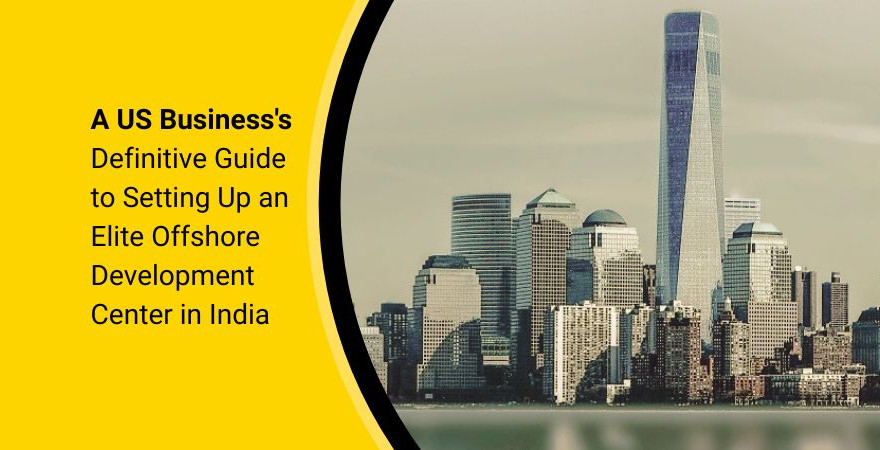
For US businesses eyeing strategic growth and a competitive edge, the allure of establishing an Offshore Development Center (ODC) in India is stronger than ever. Beyond the often-cited cost efficiencies, India presents a vast, highly skilled talent pool, a robust IT infrastructure, and a government increasingly supportive of foreign investment. However, navigating this terrain demands a nuanced understanding of its legal, operational, and cultural intricacies. This guide delves into the “nitty-gritty” of setting up an elite, globally-integrated ODC, offering practical, actionable advice for discerning US enterprises.
India’s rise as a global IT powerhouse isn’t accidental. It’s a confluence of factors: a massive, English-speaking workforce with strong technical education, a proven track record in software development, and a cost-effective operational environment. Companies like Microsoft and Google didn’t just stumble upon India; they strategically invested, recognizing its potential for innovation, scalability, and round-the-clock development cycles. The ability to leverage time zone differences for a 24/7 development pipeline is a significant draw, accelerating time-to-market for critical projects.
Establishing an ODC in India is akin to building a new wing of your US enterprise, demanding meticulous attention to legal and regulatory frameworks. This is not a “set it and forget it” endeavor; it requires continuous vigilance and expert guidance.
The first critical decision is the legal structure of your Indian operation. Each option carries distinct implications for control, liability, and taxation: Actionable Advice: Engage with a reputable Indian legal firm specializing in foreign direct investment (FDI) and corporate law from the outset. Their expertise will be invaluable in navigating the complexities of company registration, securing necessary approvals, and ensuring compliance with the Companies Act, 2013, and other relevant statutes.
Robust contracts are the bedrock of any successful ODC. Key agreements include: Nitty-Gritty Detail: IP Protection is Non-Negotiable. India has a robust legal framework for Intellectual Property (IP) protection, including the Patents Act of 1970, the Trademarks Act of 1999, and the Copyright Act of 1957. Despite this, enforcing IP laws can sometimes present challenges. Ensure your MSAs and employment contracts explicitly state that all IP developed by the ODC team belongs to the US parent company. Implement strict access controls, conduct regular IP audits, and consider registering your IP in India if significant R&D is conducted locally.
In an increasingly data-driven world, safeguarding sensitive information is paramount. India’s data protection landscape is evolving, with the recently enacted Digital Personal Data Protection Act (DPDPA), 2023, aligning closely with global standards like GDPR. Key Compliance Measures:
India boasts a vast and diverse talent pool, but securing the “elite” talent for your ODC requires a strategic approach.
This choice significantly impacts your control, cost, and speed of setup. Actionable Advice: Conduct a thorough cost-benefit analysis and assess your organization’s risk appetite and long-term strategic goals. For a true “elite” ODC, a hybrid approach or a BOT model that transitions to a fully captive unit might offer the best balance of speed, control, and long-term integration.
Once the model is chosen, effective hiring is paramount.
The landscape of US businesses with thriving ODCs in India is replete with success stories, showcasing the country’s profound impact on global innovation. These examples underscore a crucial lesson: successful ODCs in India are built on a foundation of trust, strategic investment, and a genuine commitment to integrating the offshore team into the global corporate culture.
Setting up is only the beginning. Sustained success hinges on effective management, communication, and cultural alignment.
The golden age of offshore development as a pure cost play is over. AI is reshaping developer roles, India’s talent market is maturing (and getting pricier), and US firms must adapt—or risk their ODCs becoming obsolete. The winners will be those who leverage AI for efficiency, invest in offshore talent like strategic partners, and build geographically diversified tech ecosystems. The rest will be left scrambling.
The primary legal entities for setting up an ODC in India are a Private Limited Company, a Limited Liability Partnership (LLP), or a Branch/Liaison Office. For most US businesses aiming for a full-fledged and scalable Offshore Development Center, establishing a Private Limited Company is generally recommended. This structure offers limited liability, separate legal identity, and greater flexibility for operations and future expansion, making it ideal for long-term strategic investments in India’s IT talent pool. Ensuring robust data security and IP protection in an Indian ODC involves a multi-layered approach. Firstly, US businesses must ensure strict compliance with India’s Digital Personal Data Protection Act (DPDPA), 2023, and other relevant Indian laws, alongside international standards like GDPR. This includes implementing data encryption, access controls, and regular security audits. Secondly, all contracts (Master Service Agreements, employment contracts) must explicitly state IP ownership vests with the US parent company and include comprehensive non-disclosure clauses. Conducting thorough background checks on all ODC employees and implementing strong physical and digital security measures within the ODC facility are also critical. Regular training for ODC staff on data privacy and security best practices further strengthens the security posture, safeguarding sensitive business information. With multifaceted experience in Legal, Advisory, and GCCs, Yashasvi weaves law, business growth, and innovation. He leads a cross-functional team across legal, marketing, and IT to drive compliance and engagement. His interests span Law, M&A, and GCC operations, with 15+ research features in Forbes, ET, and Fortune. A skilled negotiator, he moderates webinars and contributes to policy forums.
The Strategic Imperative: Why India?

Laying the Foundation: Legal & Compliance Prowess
1. Entity Setup: Choosing Your Indian Anchor
2. Contractual Frameworks: Fortifying Your Operations
3. Data Security & Privacy: A Global Imperative
Talent Acquisition: Building Your Indian Dream Team
1. Direct vs. Partner-Led ODC Models: A Critical Juncture
2. Hiring Strategies: Tapping into India’s Talent Pool
Real-World Case Studies: The India ODC Success Story
Beyond Setup: Operational Excellence and Cultural Integration
Conclusion: The ODCs That Thrive Will Be AI-First, Talent-Centric
frequently asked questions (FAQs)

Yashasvi Rathore
Hey, like this? Why not share it with a buddy?
Related Posts
Recent Blog / Post
- Why Mid-Sized Companies are Embracing the GCC Model October 16, 2025
- What Is A Global Capability Center (GCC), and Why Is It Essential For Modern Business? October 16, 2025
- Gurugram’s Tech Ascent: Decoding the New Haryana GCC Policy October 15, 2025
- Scaling Your Tech Team: A Beginner’s Look at the Offshore Development Center October 15, 2025
- Agile Methodologies for GCCs: A Blueprint for Success October 6, 2025
- The Legal and Compliance Checklist for a New GCC Setup October 4, 2025
- The Rise of Niche GCCs: A Focus on Specialised Capabilities October 4, 2025
- The Impact of Regulatory Changes on GCC Operations October 4, 2025
- Cybersecurity for GCCs: A Proactive Approach to Data Protection September 30, 2025
- Beyond Cost: Measuring the True ROI of Your GCC Investment September 29, 2025
- The Future of GCCs in the Retail Sector: A Strategic Playbook September 29, 2025
- David vs Goliath: Mid-Sized GCCs Quietly Outperform the Big Brands September 29, 2025
- Infineon’s Big Bet on India: Inside Its First GCC in GIFT City September 29, 2025
- From Campuses to Capability Centres: How Indian Universities Power the Global GCC Ecosystem September 29, 2025
- Retail Meets Digital: Costco’s GCC in Hyderabad Marks a Global Shift September 29, 2025
















